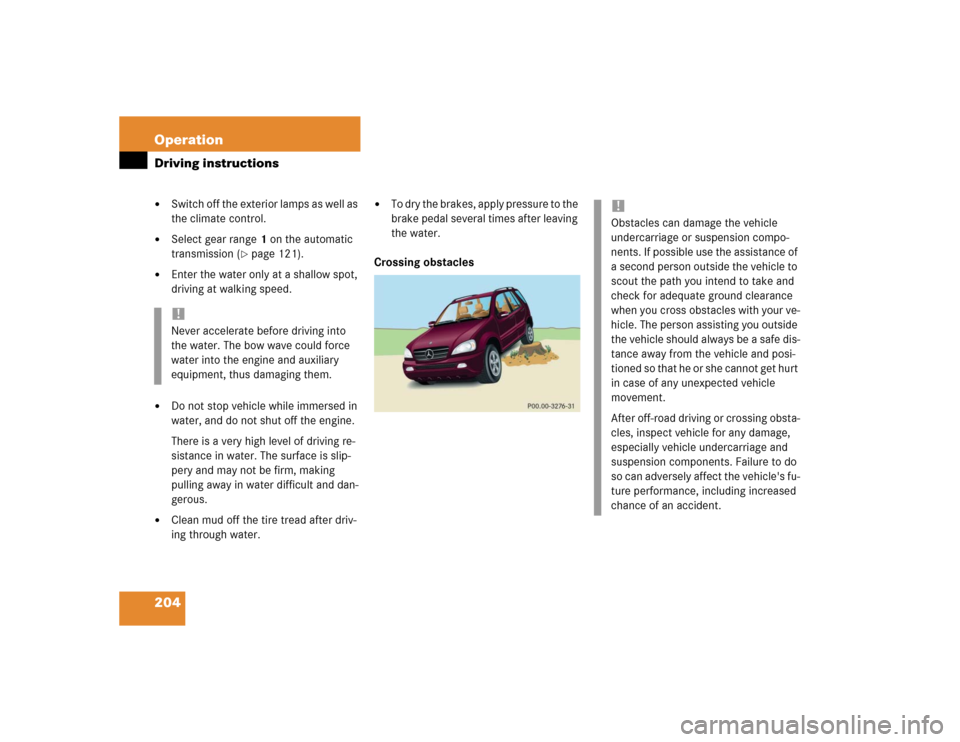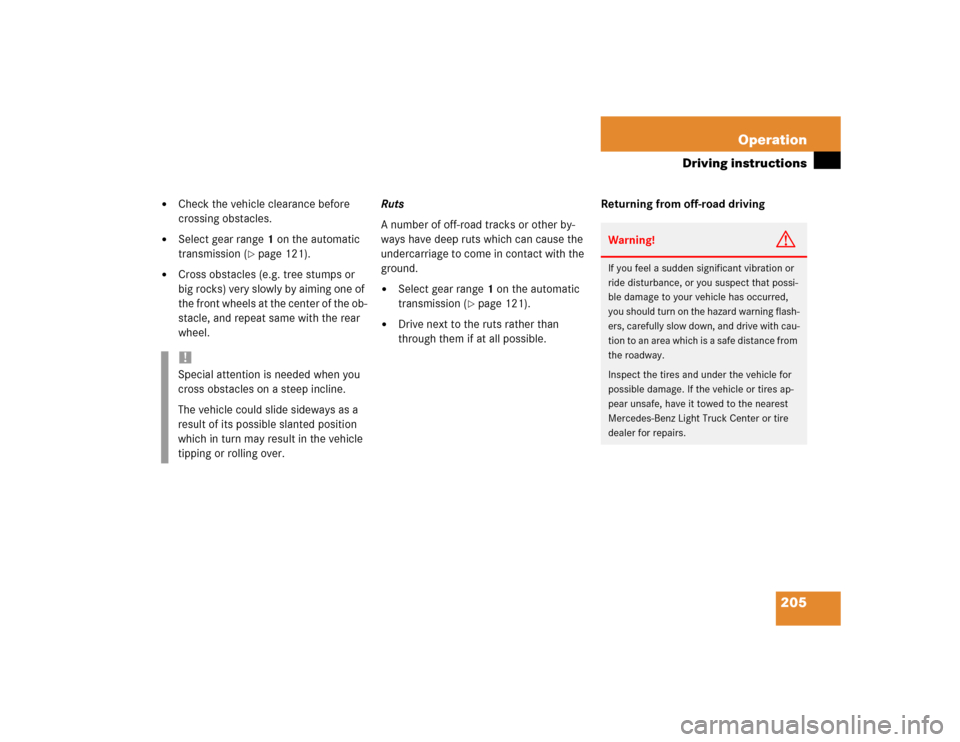Page 14 of 344

14 IntroductionOperator’s ManualWarning!
G
This Sport Utility Vehicle is designed for both on-road and off-road use. It can go places and perform tasks for which conventional 2-wheel drive
passenger cars are not intended. This vehicle will handle and maneuver differently from conventional passenger cars in driving conditions which
may occur on streets, highways and off-road use.
This vehicle has a higher ground clearance and a higher center of gravity than many passenger cars. As with other vehicles of this type, if you
make sharp turns at excessive speeds or abrupt maneuvers, the vehicle may roll over or may go out of control and crash. Utility vehicles have a
s ig ni fi ca n tl y hi gh er ro l lo ve r r at e t h an o th er ty pe s of veh i cl es . F a il ure to o pe ra te th is v eh ic l e s a fel y ma y res ul t in a n ac c i dent, rollover of the vehicle,
and severe or fatal injury.
Before you start to drive this vehicle, read the Operator’s Manual. Take time to become familiar with the driving characteristics of this vehicle. Be
sure you are familiar with all vehicle controls. Learn how your vehicle handles on different road surfaces. Do not attempt sharp turns at excessive
speeds or abrupt maneuvers or other unsafe driving actions that can cause loss of vehicle control. When driving off-road or working the vehicle
hard, do not overload it. And, always wear your seat belts at all times. In a rollover crash, an unbelted person is significantly more likely to die than
a person wearing a seat belt.
Page 204 of 344

204 OperationDriving instructions�
Switch off the exterior lamps as well as
the climate control.
�
Select gear range1 on the automatic
transmission (
�page 121).
�
Enter the water only at a shallow spot,
driving at walking speed.
�
Do not stop vehicle while immersed in
water, and do not shut off the engine.
There is a very high level of driving re-
sistance in water. The surface is slip-
pery and may not be firm, making
pulling away in water difficult and dan-
gerous.
�
Clean mud off the tire tread after driv-
ing through water.
�
To dry the brakes, apply pressure to the
brake pedal several times after leaving
the water.
Crossing obstacles
!Never accelerate before driving into
the water. The bow wave could force
water into the engine and auxiliary
equipment, thus damaging them.
!Obstacles can damage the vehicle
undercarriage or suspension compo-
nents. If possible use the assistance of
a second person outside the vehicle to
scout the path you intend to take and
check for adequate ground clearance
when you cross obstacles with your ve-
hicle. The person assisting you outside
the vehicle should always be a safe dis-
tance away from the vehicle and posi-
tioned so that he or she cannot get hurt
in case of any unexpected vehicle
movement.
After off-road driving or crossing obsta-
cles, inspect vehicle for any damage,
especially vehicle undercarriage and
suspension components. Failure to do
so can adversely affect the vehicle's fu-
ture performance, including increased
chance of an accident.
Page 205 of 344

205 Operation
Driving instructions
�
Check the vehicle clearance before
crossing obstacles.
�
Select gear range1 on the automatic
transmission (
�page 121).
�
Cross obstacles (e.g. tree stumps or
big rocks) very slowly by aiming one of
the front wheels at the center of the ob-
stacle, and repeat same with the rear
wheel.Ruts
A number of off-road tracks or other by-
ways have deep ruts which can cause the
undercarriage to come in contact with the
ground.
�
Select gear range1 on the automatic
transmission (
�page 121).
�
Drive next to the ruts rather than
through them if at all possible.Returning from off-road driving
!Special attention is needed when you
cross obstacles on a steep incline.
The vehicle could slide sideways as a
result of its possible slanted position
which in turn may result in the vehicle
tipping or rolling over.
Warning!
G
If you feel a sudden significant vibration or
ride disturbance, or you suspect that possi-
ble damage to your vehicle has occurred,
you should turn on the hazard warning flash-
ers, carefully slow down, and drive with cau-
tion to an area which is a safe distance from
the roadway.
Inspect the tires and under the vehicle for
possible damage. If the vehicle or tires ap-
pear unsafe, have it towed to the nearest
Mercedes-Benz Light Truck Center or tire
dealer for repairs.
Page 298 of 344
298 Technical dataMain Dimensions
�Main DimensionsModel
ML 350, ML 500
Overall vehicle length
182.6 in (4638 mm)
Overall vehicle width
83.7 in (2126 mm)
Overall vehicle height
71.7 in (1820 mm)
Wheelbase
111.0 in (2820 mm)
Track, front
61.2 in (1555 mm)
Track, rear
61.2 in (1555 mm)
Ground clearance
8.03 in (204 mm)
Turning radius
468.5 in (11.9 m)